















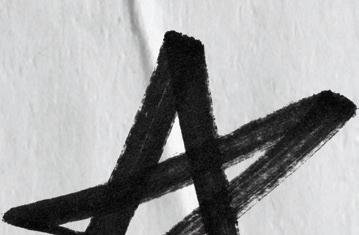




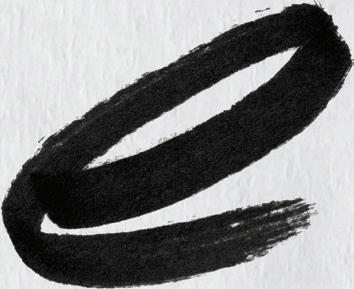












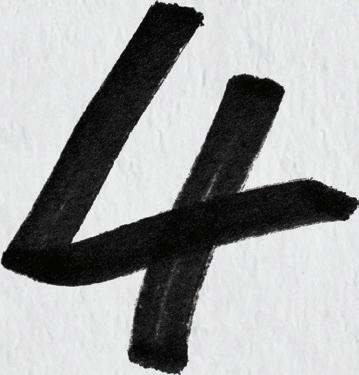


























“A er exams are over I am going to be going home and spending time with family and friends.”
- Talia Kendal, 4th year, kinesiology
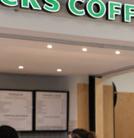







“A er exams are over I am going to take an edible and watch nature documentaries..”
-Ji Soo Kim, 3rd year, BBA












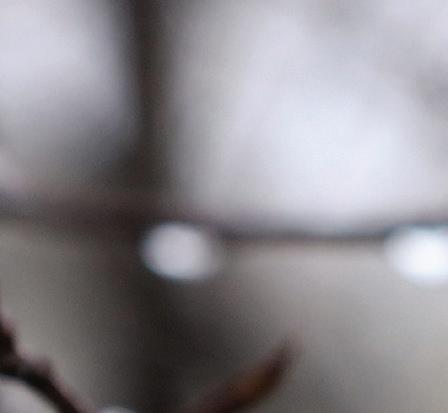


PHOTO OF THE MONTH FROM THE ARCHIVES What are you doing once the term is over?







“A er exams are over I’m excited to go back home and spend time with my family. ”
-Jordan Redford, 1st year, psychology












“When exams are over, I look forward to being at home with my family and pets!. ”
-Kendra Sommers, 1st year, psychology





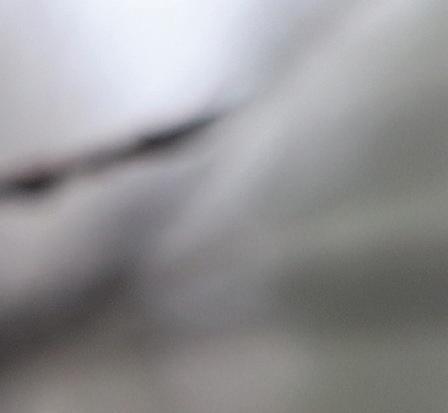
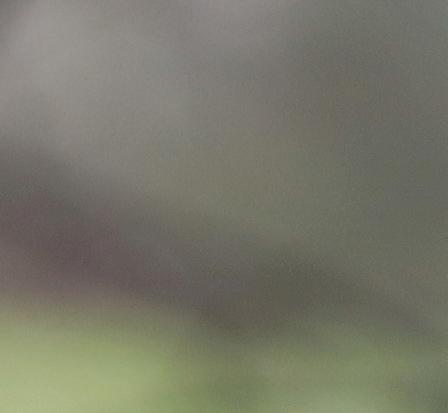







ASHLEY BARRY LEAD REPORTER
e construction of a new six-story a ordable housing development in Waterloo is o cially underway.
In January, the Waterloo Regional Council approved various measures to create new a ordable housing within the city to combat the issue of rising costs of living.
e Waterloo Region Council is working in collaboration with Canada Mortgage and Housing Corp and the federal government’s Rapid Housing Initiative that aims to supply funding for the construction of new permanent a ordable housing units that must be built in under 18 months.
“As a person who represents the city of Waterloo, we’re really happy that this is going ahead, and we’re working very collaboratively with the Region of Waterloo, federal government, the provincial governments and nonpro t organizations to do what we can to build more of these types of units
CAMPUS HISTORY
in our community,” said Dorothy McCabe, the mayor of Waterloo.
e six-story building at 420 Kingscourt Drive will have 73 units ranging from one to ve bedrooms.
More than half of the units are set aside for women and children.
Additionally, the location of the building near Conestoga Mall will be close to numerous amenities, providing increased accessibility for future residents.
“ e location will have access to the grocery store, schools, employment opportunities, the LRT line, trails and parks––so it’s a really good location for a number of reasons,” McCabe said.
Not only does the a ordable housing project supply a promising step forward in terms of easing the a ordable housing crisis, it also creates opportunities for equity-deserving groups.
“ ey’ve also added a stipulation that the builders have to do some skilled trades training of over 1000 hours with youth from equity deserving groups,” McCabe added.
As the construction for 420 Kingscourt Drive continues, the Waterloo Region Council plans on expanding the a ordable housing project.
“We know we need more housing, so there’ll be other housing units applied for and started on in Waterloo. ere is soon going to be construction started in the Beechwood neighbourhood,” she said.
With future a ordable housing plans in progress, the mayor would also like to think about how the construction could lead to creating buildings that use renewable energy, as well as tackling homelessness in Waterloo.
“I think what we really need as a city and a region and community is with all the building that’s going on, to work with builders and developers to say we need to build things with renewable energy, like geothermal heat instead of gas––we need to think of energy e ciency, and the other thing is we need more supportive housing for people who are experiencing homelessness,” McCabe said.
Although it would be convenient to tackle these issues while planning for further construction, there are some challenges in the way.
“ ere’s a ordability and housing challenges throughout the province, but in Waterloo, one of the things that makes it particularly challenging is that we’re like a

smallish city of about 105 ish thousand people, but we then welcome in about 60 000 to 70 000 students every year,” she said. e increasing population of students in Waterloo suggests that the Waterloo Regional Council and universities should work together to provide additional housing for students.
“We certainly realize that there’s an a ordability challenge for the students, and we’re talking to the universities and the colleges to say they have a role to play too, in terms of should they be reevalu-
ating if there is a need for more student residents?”
Moreover, the rise in cost of living in Waterloo is impacting the community, and the continuation of a ordable housing projects funded by the city and federal government will help individuals and families obtain an a ordable home.
For more information and updates, check out Waterloo Regional Council’s Twitter account.
On Jan. 30, 1970, Wilfrid Laurier University (WLU), at the time named Waterloo Lutheran University, hosted the annual Miss Canadian University Pageant. at same year, the pageant was shut down as a result of one of the most in uential women’s liberation protests in Canada.
Held as a part of the WLU winter carnival, the Miss Canadian University pageant was the largest student pageant in Canada. It was founded in 1963 and hosted at WLU throughout the 1960s.
“[ e pageant] was seen as a nationwide, very well respected event on campuses. For the women’s liberation movement to have that platform to go and disrupt it was a really huge deal,” said Megan Blair, PhD Candidate at the University of Waterloo and author of the Miss Canadian University Pageant Controversy and Protest Archive Exhibit. Representatives from di erent universities across Canada would send a pageant candidate to represent their school in hopes of being crowned Snow Queen.
A 1964 edition of e Cord stated that the Snow Queen was chosen “... on the basis of beauty, poise, personality and intelligence.”
Expensive prizes were awarded to the winners of the pageant.

Including cars, vacations and clothing.
“People were competing for really big prizes, cash and fancy things. It wasn’t just like you were given the title of Miss Canadian University, you were given impressive stu ,” said Blair. “For the women’s liberation movement, to have women be rewarded for displaying their bodies and what they saw as displaying these antiquated ideas of femininity so I think that was another element of why the protesters wanted to stop it.”
e 1970 pageant saw its rst protest candidate and later, an entire student protest, labeling the pageant as a misogynistic event.
“I think [the protest] had a really huge impact,” said Blair. “ e pageant had a ton of huge sponsors from the community and was on a national scale. e fact that these students were successful in bringing attention to the problematic nature of pageants and putting women’s bodies on display … was really impressive.”
Janiel Jolley, then a twenty- ve year-old student from Simon Fraser University, planned to attend the 1970 pageant as a protest candidate. She had support from the Vancouver women’s caucus and the SFU student society. However, the WLU pageant organizers banned Jolley from competing.
With support from over 250 women’s liberation movement advocates, Jolley protested the pageant.
“ ere was de nitely a mixed bag of response to her protest,” said Blair.
“Some of the more feminist newspapers, because there were tons of feminist newspapers at this time across the country, they were all super supportive of her because it was a big deal that she was protesting this pageant and successfully canceled the pageant,”
Blair added.
“Local papers were a little more upset with her, because again, this pageant brought a lot of publicity to the Waterloo area and a lot of people to Waterloo so it was obviously very good for business and publicity. So the fact that they were getting this negative publicity and then ultimately the pageant eventually stopped, so local papers were upset from that angle,” said Blair.
“Student newspapers, like e Cord in the 1970s, had a mixed reaction too. ey were also moving with the times and recognizing the women’s liberation movement and the impact of protests. But there were also some undertones, because the paper was male dominated at that time, so a lot of the men were [skeptical],” added Blair.
A 1970 issue of e Cord, released after Jolley’s protest, covered the events saying, “ e only unfortunate aspect of this year’s
pageant was the protest led by Janiel Jolley.”
e protest resulted in the cancellation of the Miss Canadian University Pageant as nancial support depleted after universities began withdrawing from the event. Also, the women’s liberation movement on university campuses across Canada grew following the 1970 protest.
“I think it was for sure a big step for the women’s movement on campuses,” said Blair. “It made nationwide coverage and by challenging the idea that women were in university to be on display but rather to be equals with their male colleagues on campus was really in uential.”
e protest also translates to students today. “ is shows the importance of student activism and student protest and the fact that students can have a real voice and a real impact on things,” said Blair. “I think this reiterates the potential for students to initiate change wherever they are on campus.”
For more information on e Miss Canadian University Pageant and the 1970 Protest, visit Blair’s archive exhibit.
“Still today, it is looked at as one of the key protests in the women’s liberation movement in Canada, I think that is really in uential and important that it has remained as one of the key events of the women’s movement in Canada in the 1970s and it was this protest at Laurier,” said Blair.

JAMES WINSLOW NEWS EDITOR
is article mentions drug use.
On Jan. 31, 2023, British Columbia began a three-year experiment in user-level drug decriminalization.
E ective last week, an exemption from the Controlled Drugs and Substances Act guarantees that adults in B.C. will not be arrested or charged for possessing illegal drugs at a quantity of 2.5 grams or less. e compounds covered under the exemption include opioids such as heroin, morphine and fentanyl; crack and powder cocaine; methamphetamine; and MDMA.
Few Canadians are acutely aware of how serious the drug problem in B.C. and elsewhere has become. In the rst six months of 2022 alone, opioid users from various walks of life died at a rate of 20 people per day across the country. is tidal wave of su ering is swelling by the day.
Users and experts alike are not convinced that decriminalization will catalyze su cient improvements in the opioid crisis. Or, at the very least, that it will not do this by itself.
“[Decriminalization] has been done in other jurisdictions in the world. It’s had some success but it comes with a big [caveat]: it has some success if you do some other things with it,” Bruce McKay,
neuroscientist and dean of Wilfrid Laurier University’s Faculty of Human and Social Sciences, said.
Evidence for this sentiment
might be the fact that B.C.’s opioid crisis has only worsened in recent years despite what has been called de facto decriminalization being the law, or rather unlaw, of the land for some time now.
“For many years we have had a de facto policy not to arrest people for personal drug possession. In that sense, decriminalization of small amounts of drugs for personal use will not impact the way we operate,” Sgt. Steve Addison of the Vancouver Police Department told City News.
To foster meaningful change, something more than decriminalization – which has only now been made o cial – must be brought to the table.
One nation that has done this with some success has been Portugal, often cited as a strong case for the e cacy of decriminalization.
However, McKay explained that Portugal did more than just decriminalize drugs: Tthey shifted their attention to mental and physical health parameters.
“What they instituted was social policy that really invested signicantly in education programs, detoxi cation, harm reduction, education, employment opportunities and mental health treatment,”
McKay said.
Another thing that Portugal did was crack down on dealers. “So, they tried to cut o the supply but they also looked at why there was a demand … if you don’t look at


supply and demand together, then there’s always going to be a supply because the demand is always going to be there.”
As Dr. Gabor Maté noted in his book In the Realm of Hungry Ghosts, “A hurt is at the centre of all addictive behaviours.”
For some, this might mean “childhood trauma, childhood abandonments [and/or] serious mental health issues,” McKay explained.
Unless the government takes the hurts driving addiction seriously, decriminalization is not likely to save lives, since the demand that McKay mentioned will remain high.
In a short documentary pub-
lished by the CBC last week, drug users also expressed hesitancy in commending the province’s move towards decriminalization. Kali
Sedgemore, a harm reduction advocate and self-proclaimed methamphetamine user from Vancouver, called decriminalization “a step in the right direction,” but little more than that.
“ ey think it’s going to help curb the overdoses when it’s not … all this does is just limit people getting arrested for using drugs and stu . People are still going to be dying from toxic drug supply,” Sedgemore said in the documentary.
And the drug supply is indeed toxic. Most unintentional over-
doses happen because drugs are contaminated with compounds like fentanyl, which is fatal in near-microscopic quantities.
“ at becomes easily mixed into other opioids, into cocaine, into methamphetamine … and of course you would never see it, you never taste it, you never smell it, it’s just there and it would be lethal. at’s the problem,” McKay said.
e exemption from Health Canada will expire on Jan. 31, 2026.
“It’s important we’ve done it, but it is just one piece of what needs to be a much larger plan to help these individuals,” McKay said.

YASMEEN ALMOMANI EDITOR-IN-CHIEF
On Apr. 17th, Pilot Co ee Roasters is opening their tenth location at 114 King St. S. in Uptown Waterloo. Pilot Co ee Roasters was founded in 2009 with the goal of introducing specialty co ee in Toronto.
Bruce Miller, CEO of Pilot Co ee Roasters, who was born and raised in Waterloo, said that he considers it an incredible community for expansion.
“[We are] very excited about expanding. is is actually the rst community that we looked at to be able to nd a location outside of Toronto,” he said. eir mission is to represent a global community of dedicated professionals, dedicated skill and hard work.
“What direct trade is, we simply have the world’s best co ee,” Miller said.
Pilot Co ee Roasters is built around the idea of sourcing Direct Trade co ee ethically and being transparent about the process of the co ee from farm to cup. Pilot Co ee’s co ee re ects complex avours encompassed in the bean,

climate, soil, and the care and skill of the farmer who grew it.
Since 2009, they have opened multiple locations in Toronto and received numerous awards, including a place on the GROWTH 500 list, which is an award for Canada’s fastest-growing companies.
Pilot works with trusted partners
and traces the co ee’s origin through their Direct Trade model. is model includes being in direct communication with the farmer and visiting the farm in person, opening up their business to producers and building a mutual understanding of each other’s needs, ensuring that the farmers
are also committed to sustainable and ethical practices, and guaranteeing a price that is at least 20 per cent above fair trade.
He explained how they go to the world’s nest co ee producers and ensure that they have discussions about the pricing so that the farmers are directly making pro t.
He said that they also reinvest back into communities – for example, they fund education for kids in Catalan de Las Mercedes.
“ at’s direct trade. It’s circular. ey give us world class co ee and improve every year, we reinvest
What direct trade is, we simply have the best co ee.
back into their communities,” Miller said.
e Waterloo location includes seasonal co ee o erings, freshly baked goods, retail co ee, brewing gear and a wide range of non-coffee drinks, including craft beers and wines.
ere are also options to purchase their co ee beans on their website, which provides brew guidelines and recipes.
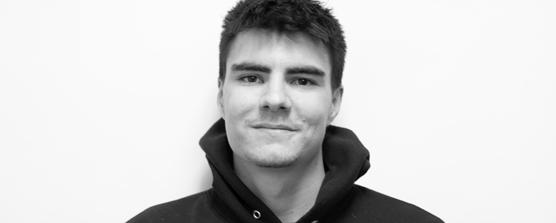
JAMES WINSLOW NEWS EDITOR
On Feb. 6, the director of CSIS and Canada’s public safety minister sat before a parliamentary committee and elaborated a link between climate change and national security.
In timely fashion, this information made landfall two days after a record-breaking cyclone would get his name, Freddy, from the Australian Bureau of Meteorology. Cyclone Freddy now holds the record for most accumulated cyclone energy – the total strength of the storm over its lifetime.
Damaging and deadly storms like Freddy will plausibly get worse as the planet warms. Such a predicament means unique challenges for the usual suspects: Infrastructure, human populations and wildlife. But it also poses challenges for the entity of the nation - national security chief among them.
According to Simon Dalby, Professor Emeritus at Wilfrid Laurier University and BSIA fellow at the Balsillie School of International A airs, the link between climate

change and national security was initially debated in the context of con ict.
“... much more recently, it’s become clear that the direct damage that climate change is doing in droughts, storms, res and so on is clearly compromising the function of many states,” Dalby explained.
In Canada, this relationship was made evident in 2021 when an atmospheric river destroyed bridges, highways and other infrastructure in what Dalby called “substantial chunks of the province”
“If you can’t get goods or people in and out of one of the biggest ports in North America for a couple weeks because of the damage caused by [a] storm, then clearly security in many forms is being compromised.”
What’s more, when storms like this happen in Canada, the military is usually called in to assist with evacuations and disaster relief.
“So, the military is now worried because if they’re busy rescuing ood victims, their primary role in preparing for combat and to de-
fend the country is compromised too,” Dalby added.
To avoid such distractions, Canada will have to make moves to fortify both military and civilian infrastructure. e case of ooding in B.C. in 2021 showed that increasingly extreme weather events bring damage which is di cult to dispel with current infrastructure.
“We found out … [with] massive ooding following that atmospheric river in 2021, that crucial parts of the agriculture production of the province ended up underwater.
Letties and dykes, pumping houses and all the rest of it simply weren’t build on the scale that was needed to cope with this increasingly likely kind of extreme event,” Dalby said. at said, not all regions will be practical candidates for forti cation.
“... some places we may be able to strengthen infrastructure. In other places we may simply have to recognize that we’re going to have to concede that the sea wins that struggle and we let go of certain landscapes.”
Even in places where adaptation is feasible, it is imperative that Canada (and other nations) work to prevent further warming.
“... the crucial point here is to slow the thing down. at will make adaptation easier but we also have to adapt in ways that don’t use carbon fuels to do so, because if we’re simply using huge amounts of carbon fuel to adapt to the hazards of using huge amounts of carbon fuel, we’re not getting ahead,” Dalby said.
Taking adaptation and prevention seriously, and fostering a politic that re ects this, will be increasingly important as Canada moves into a volatile and dangerous climate.
is article mentions drug use. e belief that marijuana is an addictive substance has been a point of social and medical debate for over a century. While occasional users may overlook the addictive potential of this drug, medical cannabis, for some, marijuana use can become a regular and compulsory part of their day. But marijuana isn’t just to help relax at the end of a long day, or to start the party. Many use it for bona de medical conditions.
Many students have anxiety, ADHD, poor sleep, arthritis and other medical conditions that might be alleviated by the use of cannabis. However, before using cannabis for a symptom or condition, one should seek medical advice.
When taking a new medication, including medical cannabis, it is important to remember that everybody is di erent. e “medicine” can interact with people in diverse ways. Patient weight, sex, and fat content; drug dose and ingestion in relation to food, and even hydration and other medications can all a ect a drug. For some people, a small amount of THC may have little e ect. On the other hand, for those who are more sensitive, a small amount can lead to negative side e ects like paranoia, headaches, and a racing heart. A combination of these side e ects can even lead to a full-blown panic attack.
Dr. Brun Del Rey is a family doctor working with Bodystream
Medical who regularly prescribes medical cannabis (MC) to patients. Warnining of the potential side e ects of using more THC than a person can tolerate, Rey states that “When anybody tries any new medicine, they don’t know if they may be sensitive or not. In general, you start low and go slow. You raise the dose amount so that you have a chance to see if there’s any issues that develop.”
If one begins to experience unpleasant side e ects like dry mouth or anxiety, it may be best to dial back the dose.
If you aren’t sensitive, you may choose to increase the dose slowly to nd your comfort level so that you eventually can experience “all the good e ects and none of the side e ects.” Futher, Ray states that you can also attempt to “push the limits and see where you start [experiencing] unpleasantness.” so that you can nd the “sweet spot” dosage for your condition.
Bruce McKay, a faculty member at Laurier in the Department of Psychology, elaborates further on the risks of marijuana addiction: “If someone regularly uses cannabis and they stop using cannabis, they will have withdrawal symptoms,” he stated. “I would say in the last few years, more students understand that cannabis is an addictive drug. I remember teaching about this eight or ten years ago, and there was kind of a widespread disbelief that people could become addicted to cannabis; that was for other drugs. But the reality is, it’s actually quite addictive, as is any rewarding thing that people do.”
Studies show addiction can
occur in adults 18-24 years old at about 6% and up to 10% in teenagers. So, what are the potential consequences of cannabis addiction? One thing to consider is that young adults do not have a fully formed frontal brain (higher decision making, organization, and judgment) until the ages of 24-25. Research shows that chronic cannabis use, especially from an early age, can lead to cognitive dysfunction in memory, learning and attention. It’s important to remember that the negative e ects of cannabis are exacerbated by regular use of high levels of THC. Regular use of highTHC is associated with cognitive dysfunction, although low levels of THC use may have positive benets such as improved concentration and reduced anxiety.
Both CBD, which is not psychoactive, and THC, which is, have a bipolar tendency. In low doses, CBD and THC have one e ect, and in high doses, they often have an opposing e ect. As stated by Dr. Del Rey, “[A] classic example with THC … at a low dose you’ll nd that it stimulates the appetite. e munchies is a classic side e ect, whereas at a higher dose, it’s the opposite. You’re actually vomiting or having diarrhea, so that your whole digestive system is rejecting it.”
One consequence of overuse of cannabis is a condition called Cannabis Hyperemesis Syndrome (CHS). Although rare, a small number of people with long-term use of high-dose THC (weekly for two years) develop dramatic and intense cyclical episodes of nausea, vomiting and abdominal

pain. is can have the possibility of ending in an ER visit with bloodwork and x-rays. is condition is believed to be caused by an excessive stimulation of the cannabinoid receptors (those binding to THC) in the gastrointestinal tract. Interestingly, su erers nd that multiple hot showers each day can temporarily relieve the symptoms.
“ e cause is … regular use of cannabis from a fairly early teenage years,” stated. McKay. “It tends to be really high concentration cannabis use as well. So higher THC concentrations and typically lower CBD concentrations.”
is condition can lead to negative health e ects including esophageal tearing from excessive vomiting, persistent nausea, dehydration, weight loss, and electrolyte imbalances. “ e only solution is to stop using cannabis,” stated McKay. Some patients [with severe abdominal pain] might end up having “exploratory surgery” to look for a cause and end up with
an appendectomy. Following the cessation of cannabis use, symptoms resolve within a few days to weeks, and in unfortunate cases, it may take several months. e prevalence of CHS is not well known, with some studies citing that 1 in every 200 frequent cannabis users will develop CHS while other studied indicate that only 0.3% of the population is suffering from this condition. While overall CHS is quite rare, it is important to consider this potential outcome as well as the other potential side e ects of heavy or regular cannabis use. To refrain from these possible issues, it is useful to consider limiting use of cannabis products, lowering THC doses and remembering the phrase, “start low, go slow.” Further, one should consult a medical professional if they have a medical condition and plan to use cannabis products.
The following reviews are based on interviews conducted with members of the Students’ Union Board of Directors, as a means of reflecting on the year and evaluating their performances as representatives of Wilfrid Laurier University’s undergraduate student body.





The president and CEO of the Students’ Union has transitioned well into the role after the lifting of COVID-19 restrictions. He was engaged in meetings and his updates were said to be clear and helpful.
In addition, he did a good job picking things up after two years of restrictions. When encouraged to have more of a presence on the Brantford campus, President Symington took the criticism well and continued to improve throughout the year. In retrospect, he has been encouraged to find more interesting ways for oncampus programming and to take accountability when needed. There were also times when he could have worked specifically with policymakers in the region and contributed to direct advocacy efforts.
Chair Del Giudice has proven himself to be a capable leader for the board this year, someone who is easy to access and has dealt with pressing issues throughout the term.
Chair Del Giudice was praised for juggling many operations and accommodating board members
Vice-Chair Phillips has been commended on being dedicated to his role as a leader who participated and contributed his knowledge. It was noted that despite being on a co-op term, he would contribute to meetings by interpreting and
when needed. He was commended for handling “awful circumstances” efficiently and has passed down his knowledge to new directors, mentoring and shadowing the upcoming chair. He has been retrospectively encouraged to do more outreach events outside of meetings;
Described as “extraordinary,” Symington put in a good amount of effort as president this year.
has shown
and accountability
Director Dermott was recognized as a board member with room for improvement this year. He could have attended more meetings and
translating policy.
Vice Chair Phillips is recognized as open to ideas and knowledgeable about policy. He has been retrospectively encouraged to participate further in subcommittee meetings and to use motions
described as “on the ball” during board meetings. Like many directors on the board,
however, his team has cited a need for more institutional support for the Chair.
Chair Del Giudice has shown himself to be someone who cares for the organization and students; he is communicative and approachable despite having a lot of responsibilities.
correctly in board meetings.
Vice Chair Phillips has showcased a clear commitment to the board this year and has been honest when voicing opinions to fellow directors.
he is encouraged to continue growing and contributing to discussions during board meetings.
contributed to the direct inspection committee more frequently.
When present, Director Dermott was vocal and presented a strong
position on issues discussed.



As the only woman on the board, Director Murphy is praised for her attendance and contribution to meetings
DIRECTOR
She was commended for her expertise on Greek Life and her commitment to speaking up in debates and discussions.
DIRECTOR
Director LeClair has been involved in multiple committees and has been passionate about bringing
Despite this being Director AbuRshaid’s first year on the board, he left a noteworthy impression and his team spoke highly of his performance.
As the incoming Chair, he is sincerely committed to improving things for students on both campuses and positively changing
As the newest director on the board, Sebastien has made a strong impression on the board, he is always


She is encouraged to continue growing and contributing to discussions during board meetings.
transparency to the board. He has advocated for in-person programming throughout the year and “asks the hard questions,” making sure to focus on accountability with the board.
DIRECTOR DIRECTOR
Director Goodwin was encouraged to attend and continue speak up in board meetings to contribute meaningfully to discussions.
things that need to be changed.
As a Brantford director, he is classified as outspoken and wellknowledgeable in discussions.
Director Abu-Rshaid has taken tangible steps to increase campus safety and increase advocacy for the Brantford campus.
He always shows up to meetings
involved, reads the material and contributes to meetings constantly. He was described as “amazing” by
and asks questions to advocate for students. He is known to have good questions that clearly show his care for the organization.
He sits on multiple committees and is heavily involved in the board; he is consistently prepared for meetings and the directors look forward to seeing him as Chair.
Director Elmasri was encouraged to continue to attend and speak up in board meetings to contribute meaningfully to discussions.

his team and has put in the effort to join the board with a strong start.
Director Betivoiu was encouraged to continue to attend and speak up in board meetings to contribute meaningfully to discussions.
THE CORD’S APRIL PLAYLIST WITH RADIO LAURIER


A MIX FOR ALL OF YOUR SPRING NEEDS
DOGTOOTH // TYLER, THE CREATOR
STILL // KENNY BEATS
NOT STRONG ENOUGH // BOYGENIUS, JULIEN BAKER, PHOEBE BRIDGERS, LUCY DACUS
SIMULATION SWARM // BIG THIEF
ROSALITA (COME OUT TONIGHT) // BRUCE SPRINGSTEEN
DRIVE ME CRAZY! // LIL YACHTY
ANTS MARCHING // DAVE MATTHEWS BAND
OCEAN MAN // WEEN
CRASH // CHARLI XCX
SIR DUKE // STEVIE WONDER
LAST DITCH DENIAL // KILL LINCOLN
BOY’S A LIAR PT. 2 // PINKPANTHERESS, ICE SPICE
PSYCHICS IN LA // PEACH PIT
PAPRIKA // JAPANESE BREAKFAST
TRICK TO HAPPY // BAHAMAS
S ON YA CHEST // INJURY RESERVE
A HUGE TREE IN THE TSUKAMORI FOREST // JOE HISAISHI
UP! // SHANIA TWAIN
SILK CHIFFON // MUNA, PHOEBE BRIDGERS
EAT YOUR YOUNG // HOZIER
A PHONE CALL FROM AMSTERDAM // VALLEY
TONGUE TIED // GROUPLOVE


•First select a number/operator and than apply it to a sudoku cell. 6 8 3 8 4 2 1 5 7 9 7 4 3 5 1 3 6 2 5 2 9 4 6 1 7 2 3 6 8 3 8 9 7 4 1 6 4 7



Find the following words in the puzzle. Words are hidden and BEE BIRD BLOSSOM BUTTERFLY DAFFODIL DUCKLING EASTER

EQUINOX FROG LUSH POLLEN PUDDLE RABBIT RAIN
RAINBOW SPRING
SPROUT SUNSHINE TULIP YELLOW
AMNA ALI ARFAN
LIFESTYLE CONTRIBUTOR
e freshman year of university is said to be one of the most memorable years of one’s undergrad experience.
From settling into the new environment, to getting your rst paper, to having to trudge from one building to another -all within the span of ve minutes for your next class (anyone who has had to race from Lazardis to Bricker can attest to this).
Freshman year is where you are truly learning beyond the classroom. Based on this, it is di cult to simplify freshman year into a bullet form list of what to expect coming into your rst year of undergrad.
However, one undeniable part of the freshman experience that everyone envisions is the residency. is then begs the question: Can you have a freshman experience while o campus?
“Freshman year” is often associated with new beginnings, and residency surely provides students with new beginnings. It is a chance to become your own person in your own space. Of course, this “space” might be with a roommate or two, but the sentiment is still there.
CAMPUS
With this in consideration, what does it mean for freshman students who are o campus? Are they being deprived of memorable moments? Are they less a part of the school community than those in residence?
Looking at Laurier speci cally, it is di cult to say whether or not this is true.
While rst year o campus students do miss out on some experiences (probably lucky they get to miss out on a few of them, such as having to deal with shared bathrooms), they still get to enjoy many memorable moments. is includes the silent headphone concert, where all rst years were able to tune into the music through provided headphones.
LOCUS- Laurier O -Campus University Students, also provides those not in residence an opportunity to still be a part of the community. LOCUS hosts many events, inviting those o campus to still be included in all the fun.
Even then, it is hard to say whether or not being o campus will do more harm than good for your freshman year of university.
Looking back at her own rst year experience on residence, at Waterloo College Hall, Grace Corriero, a fourth year political
science student, said that she, “... certainly felt more apart of the Laurier community when [she] was on residence, as there was a lot of opportunities for the students coming together as a community, and there’s a lot of opportunities during the O-Week to get to know one another.”
When asked what her favourite memory of residence life was, she laughed as she admitted that it would be, “...the frequent re alarm pulls [they] used to have… someone had pulled the alarm the second time [in December] at 2:30 in the morning.”
As a first year, it is a good opportunity to go on res, but, looking back now, if I had some more friends and I knew people, I would definitely like to live o res.
-GRACE CORRIERO


As the holy month of Ramadan commences for Muslim students, the chaplaincy and the Muslims Students Association (MSA) are providing meals to support students in need.
During Ramadan, students observing may fast during the day and break their fast with a meal at sunset, known as Iftar, which is offered by MSA and the chaplaincy.
“We have been proud to o er those Iftars to our students on campus,” Selda Sezen, the Muslim chaplain at Laurier said.
ey o er over 100 meals a day to any student in need.
“[MSA] also o er prayer services and also special Ramadan Taraweeh [prayer] services for students so I’m happy to work with them collaboratively,” Sezen said.
Sezen is also ensuring that students have support during exam time this year.
“Ramadan time is overlapping with exam and end of the term time frame for students,” she said.
“Ramadan may [create] chal-

lenges for [students], because they’re not eating, they’re not drinking, so their energy level is going down, their sleep pattern is changing, they would like to focus on a spiritual journey or spiritual activities.”
By o ering meals, students can focus on balancing their academic and spiritual wellness instead of prioritizing buying groceries and
making meals, which takes up more time and energy.
“Laurier did their best to move the exam times away from Iftar time.”
Unfortunately, exams may still fall at this time, so some professors have o ered religious accommodation for students who wish to eat something small during the exam.
O ering meals also helps pro-
vide food security for students who may be struggling.
“We are supporting students and ghting with food insecurity through our Iftar meals that we o er on campus on a daily basis during Ramadan,” Sezen said.
“I’m really glad that we had community support and internal Laurier resources, allowing us to o er Ramadan meals for students
so they feel that sense of belonging [and] sense of community.”
Some of the support received has been from parents, from Laurier student associations (such as FOSSA) and from Laurier as an institution.
Sezen is hoping to be able to o er more meals for students moving forward, until the end of the month.
Opinion
Intern Natasha Shantz explores the impact of freely available information about the diversity of identities on the youth of today.
Is there something wrong with me?”
Amid all my privilege, I haven’t been fully exempted from hearing this phrase in the back of my mind from time to time.
In a world that expects young people to follow a very specific rulebook to life, many of us have struggled coming to terms with identities that do not match these rules.
Now, more than ever, individuals are gravitating towards labels of sexuality and neurodivergency that explain all our inner turmoil.
While such labels have been degraded and ignored by many, it’s undeniable that a huge diversity of identities has always existed, a plethora which we have only just begun to research in depth.
In finally naming these identities, we are also allowing the huge spectrum of human existence to fully come into the light instead of denying the presence of those who don’t fit the norms.
Two particularly relevant varieties of human diversity are queerness and neurodivergency, terms that often overlap for many individuals. Queerness is typically synonymous to an identification with the LGBTQ+ community, identities that do not adhere to typical notions of sexuality and gender.
can certainly be problematic in many ways: it can increase youths’ exposure to cyberbullying, harmful messaging about body expectations and encouragement of substance abuse.
But as with everything, social media has its pros as well. It’s also allowed many young people to share knowledge with each other and seek answers for their self-questioning.
But as we’ve embarked on these journeys to self-discovery, our generation has also been seen as picky, over-sensitive and woke to a fault. Embracing our identities, such as figuring out which pronouns we prefer, is seen as unnecessary (“why can’t they just be normal?”).
Not only is this attitude disrespectful of regular, human self-expression, but it also puts the double-standard be-
It does seem like the youth of today are growing up a little faster than previous generations have. “
The term ‘neurodivergent’ is similarly not one deduced from medical research but one coined by a sociologist in 1998. Essentially, it describes people with challenges unique to how their brains work. They differ from “neurotypical” individuals, those do not have such differences in their brain that affect how they operate.
For all the stigma that is associated with being a member of the queer community or having one’s brain function differently than others around us, it is also incredibly liberating to realize that you may belong to these groups.
Many of my friends are claiming their identities as such, an acceptance seems to be adopted by younger and younger people every year. And to many, it does seem like the youth of today are growing up a little faster than previous generations have.
Kids are not only using technology at a younger age, dressing more mature earlier in life, but especially, thanks to the internet, they’re learning about themselves in their teenage years instead of having a mid-life crisis a few decades later.
We know that social media
tween cisgendered straight people and queer people in plain view. Heterosexual couples feel the need to throw a party to announce the gender of their baby, but sure, queer people are the ones looking for attention.
Our generation has received flack for embracing ourselves without shame, the shame that other generations have been forced to feel about their own self-expression and which we’re now expected to maintain.
But in terms of historical trends, giving names to our experiences is simply the next progression in the development of research on psychological, biological and social issues, as well as the evolution of society. This is already evident in the way that every younger generation is increasingly accepting of “non-traditional” identities as more scholars have investigated them. Going back to the boomer generation, for example, many may understand the diversity
of the sexuality spectrum, but the gender spectrum might somehow be beyond the scope of their imagination.
And then we move on to Generation X, the beginner empty nesters, who might have grasped both concepts above but still think that calling oneself “neurodivergent” is synonymous with willing laziness. Although the range of their acceptance is still limited, they are open to slightly more novelty than those before them
To put it into contrast, Generation X were some of the original rule-breakers, known as a particularly rebellious generation. Older generations have always been cynical about the unconventional ideas of the youth, and our current times are no exception to this trend.
I
find it foolish to maintain this cynicism, to think that our
tism often manifests in very different ways.
Numerous studies show that the criteria used to provide clinical diagnoses for au- tism spectrum disorder (ASD) may fail to accurately detect it in individuals who do not also have an intellectual disability, a combination that is especially common among women and girls.
This theme of misrecognition or misdiagnosis is also common with many other neurodivergent people, especially women, such as those with ADHD, dyslexia and mental health conditions like bipolar disorder.
So, with the continuing lack of general awareness about proper treatment for neurodivergent people, what are their options? Currently, many are instead opting for self-diagnoses to find some inner peace.
Some argue that we are limiting ourselves by placing ourselves in these boxes, that we don’t need to slap a label on everything.
No, of course we don’t need to categorize every little aspect of our personality. But these parts of our identities are not inconsequential details, they are the core foundations, the characteristics that resonate in and affect nearly everything we do. Really, we are asking for the bare minimum: acknowledgement and validation, concepts that were disregarded in the past for fear of nonconformity.
social norms have progressed so much that discussion about social issues and identities isn’t necessary anymore. But many “new” identities are still rarely acknowledged, and a lot of queer and neurodivergent people are having to take it upon themselves to validate their own existences.
Take the biases about autism, for instance. For decades, autism spectrum disorder has been associated mainly with young boys who show more severe, external symptoms (such as repetitive behaviours like hand-flapping).
Consequently, these are some of the only symptoms that have been understood to align with autism, symptoms that are not as prevalent in girls or in those with a high-functioning disorder
So, while professionals have been diagnosing only the most intense cases of autism, an entire population of “high-functioning” autistic people have gone under the radar. For young women, au-
But in the end, we are not the problem. We are simply forcing our norms to change, to go through a period of uncomfortable disruption.
This disruption is constant in that it is forced in every generation by the youth of the period. And each time, rebellion is (naturally) met with resistance.
The irony is that rebellion eventually becomes normal. Legislated racial equality, allowing women to vote…these are things that we don’t question anymore. In a little while, the upheaval caused by current ideas about sexuality and neurodivergency will also be water under the bridge. Besides, the concept of categorizing our identities has never been new anyways. We all understand our specific race, social standing and career, among many other classifications.
If we’re already forced to place ourselves in boxes, we might as well choose some of our own while we’re at it.


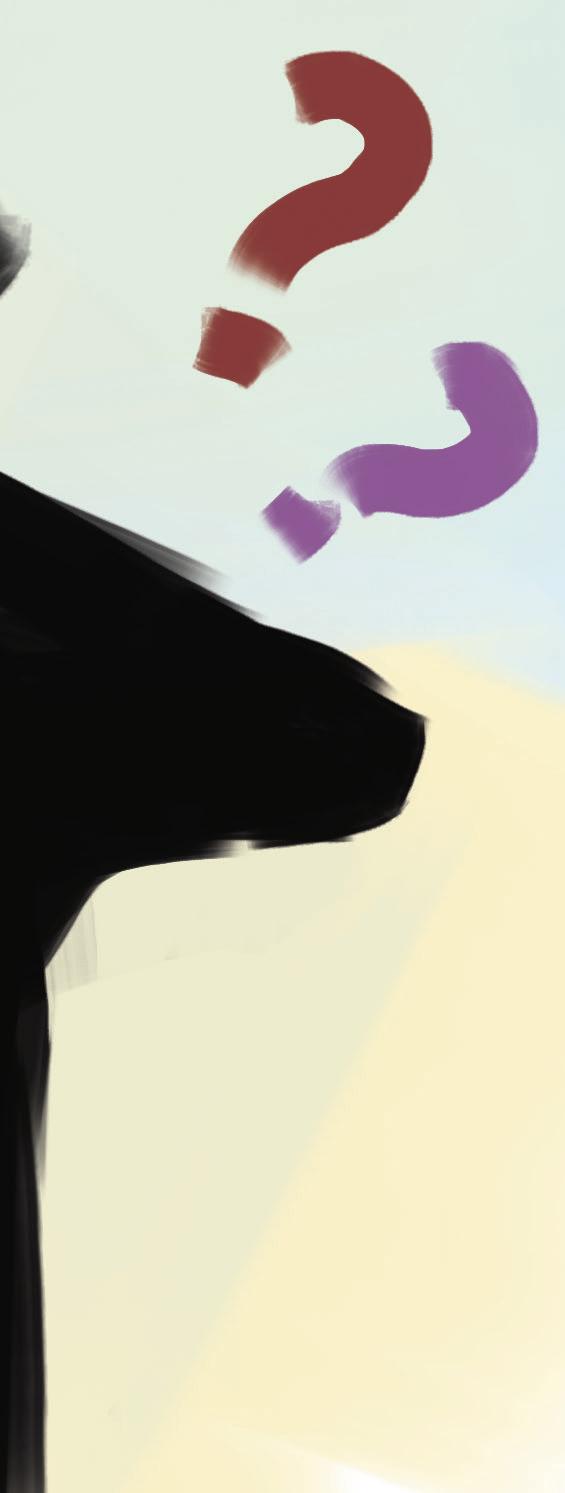

EMILY ANDERSON LIFESTYLE CONTRIBUTOR
You’re in the home stretch, Golden Hawks! e 2023 Winter semester is winding down. At this point of the year, it can be challenging to nd the motivation to go to class and complete your assignments.
After a long and di cult day in front of the screen, it can be even more challenging to t in time for your own self-care.
We’re right there with you, and as your fellow Golden hawks, we want to remind you not to be so hard on yourself during this time of year.
Make this article your guide to completing your exams with a smile on your face!
Organizing your schedule is key to improving your awareness of your priorities, and how much time you have to complete them. is decreases your chance of burnout and cramming later down the line.
Try blocking out time periods in your day that are designated for a break. By doing so, you’re less likely to be hard on yourself for taking that break, because you’ve scheduled your to-dos around it.
Laurier has a few pillar’s for taking a ‘successful’ break….
Connecting with other people can allow your mind to relax. As long as your social battery is full,

use your break time to socialize with your roommates, friends, or family. We recommend socializing in person!
We get it, sometimes all you want to do is sit and scroll; instead, entertain your mind with real people who can relate to you, motivate you, and remind you of the light at the end of the tunnel.
Relaxing is so important for your brain and body to regenerate itself. Make sure you’re getting the recommended 7-8 hours of sleep at night, doing your deep breathing exercises when necessary and rewarding yourself by unwinding without a book in front of your eyes.
If you feel tired throughout the
day, take a 20 minute nap. Anything longer than 20 minutes might actually make you even more tired than you were to begin with. Rest reduces your stress, and helps you to function properly.
Nourish your body with brain food and enough water, so that you can think clearly. Not drinking enough water can cause brain fog
and not eating enough can make you feel weak.
Studying for 30 minutes longer rather than taking a snack break may not actually bene t you in the long run; when your study your thoughts could be consumed by that box of KD in the cupboard.
Give your mind a creative outlet during exam season. Reduce your stress by having a paint night, decorate a cake night, doodling, or even do some creative writing. Being creative can increase positive emotions and bring out your con dence, making you feel ready to write that essay, or complete that assignment.
Finally, don’t forget to move your body. Students sit for the majority of the day while in class, and studying. Your mental health begs you to get outside of your bedroom! e nicer weather is on its way, don’t forget to soak in that Vitamin D and let it help you with motivation, and decreasing anxiety, depression and stress.
Lastly, we want to remind you to take advantage of all that Laurier has to o er during this exam season. Check out @LaurierWellness and @LaurierStudentSuccess on Instagram for a schedule of events hosted by Laurier that are free student services, aiding you in this stressful time.
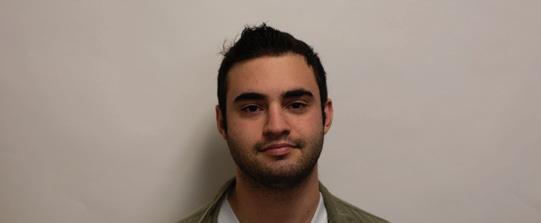
On the evening of Wednesday, Apr. 5 the rst night of Passover began. e elongated dinner, known as the sader, occurs for the rst two nights of the holiday; however, Passover is also observed for the
following six days. e holiday celebrates the biblical exodus of the Israelites from their enslavement in Egypt and subsequently becoming a united people.
Rabbi Moshe Goldman is the Director of Chabad in Waterloo and the Jewish chaplain at Laurier. He provided enlightening insight into the meaning behind Passover traditions and why it’s an important holiday for Jews.
“One of the many possible answers is that it’s the beginning of
hope,” Rabbi Goldman said on why Jews celebrate Passover.
He explained that while Jewish people have su ered through tragedy and pain, hope has always persisted among the Jewish population. is hope is represented in the Passover story, and the holiday serves as a reminder to maintain it.
Passover features many traditions, one of the most prominent being the abstention from eating leavened foods. is means anything that allows food to rise, often achieved by adding yeast.

is means no bread is consumed along with most other grain products unless made without leavening.
Instead, Jewish people eat matzah during Passover. It is a dry, brittle, hard, unleavened food made simply of our and water. ey look, and basically are, massive at crackers.
is culinary tradition has a deeper meaning, “ e fact that a [leavening product] will rise is symbolic of ego. Ego also has the property to take a human being
“Matzah is a food that symbolizes and inspires faith and humility.”
-RABBI MOSHE GOLDMAN
and make them pu , swell, and rise to greater proportions than they are naturally.”
Rabbi Goldman acknowledges ego is an intrinsic part of all people; we largely live self-absorbed existences. is doesn’t make people evil; it’s how we’re born.
“Passover is a time to tap into what we’re capable of becoming. Rising up from self-absorption and ego and living from a place of greater humility,” Rabbi Goldman said.
Rabbi Goldman and Chabad
deliver matzah to every Jewish family they know of in KW, around 250 families.
It means a lot to them; you see their faces light up.
-RABBI MOSHE GOLDMAN
is region isn’t very religious, so for many receiving this matzah is the only outside engagement they have with the Jewish community all year.
For Jews, Passover is a time to remember and reconnect to a faith that gives them the hope to look towards a brighter future.
Rabbi Goldman is concerned about the wave of anti-semitism that seems to be manifesting.
He had a message for everyone su ering through hardship; “ ere‘s more than one response to being oppressed. If you’re in the unfortunate position of being oppressed, try your best to have the Passover mindset. Don’t get stuck in the pain and the su ering, and don’t de ne yourself by what’s been done to you.”
While only Jewish people celebrate Passover, there is still a message about the holiday that is universal. To all those celebrating, chag sameach!
DANA ARAFA ARTS CONTRIBUTOR
e Gwyneth Paltrow ski incident trial, one of the most media-followed celebrity court cases, has recently come to an end.
On ursday, Mar. 30, a jury found Gwyneth Paltrow not guilty and not liable for any damages. is verdict comes after an eightday trial.
A retired optometrist, Dr. Terry Sanderson, sued Paltrow for more than $300,000 in damages over an incident in 2016 where Sanderson claims Gwyneth Paltrow hit him while skiing and ed, causing him serious bodily damage.
Paltrow responded by countersuing Dr. Sanderson for $1, claiming that he crashed into her.
Paltrow believed that Sanderson was taking advantage of her fame for money. After all, why wait so many years to sue over an incident he claims caused him so much harm?
Suspiciously enough, after the accident, Sanderson sent his daughter an email saying “I’m famous… at what cost?”. ough he could have been making a lighthearted joke, it does beg the question of his true intentions.
Sanderson claimed that the injuries he sustained from the skiing accident caused him broken ribs and brain damage causing a

decline in quality of life. Originally, Sanderson was suing Paltrow for $3.1 million but later reduced it to $300,000. is trial gained a particular amount of attention because of the
ridicule circling social media.
One part of the trial that got everyone’s attention was when Sanderson’s lawyer, Kristin VanOrman, asked Paltrow multiple questions about Taylor Swift after Paltrow
had made it clear they were not close friends.
Paltrow’s lawyer also faced some mockery for asking the judge if they could bring treats for the baili s because of how helpful
they had been during the trial. e judge denied his request and the internet laughed.
e jury reached a unanimous decision in just two hours and twenty minutes, an extremely fast deliberation.
e verdict was announced, and Gwyneth Paltrow was awarded the $1 in damages she countersued for.
e internet has even gone as far as to give Paltrow the funny name “Gwynoccent” after winning the trial.
e media was sent into an absolute frenzy after Paltrow walked out of the courtroom and whispered “I wish you well” in Sanderson’s ear, with memes circulating everywhere.
Paltrow took to Instagram after the trial and posted on her story stating how satis ed she was with the verdict of the trial, and that giving in to a false claim would have compromised her integrity.
All in all, Paltrow stood her ground and stayed true to her truth. Sanderson on the other hand told reporters he questioned whether the lawsuit was worth it and believed that celebrities are more likely to be believed by the public.
is trial, like all other celebrity court cases, will be soon forgotten and replaced by another scandal.
AMNA ALI ARFAN ARTS CONTRIBUTOR
Disney recently revealed its trailer for the upcoming live action adaptation of e Little Mermaid for 2023.
Known for its adored female lead, catchy songs, intense narrative, and the love story between Ariel and prince Eric, the announcement of the adaptation was initially met with excitement, as well as speculation as to who would be portraying the adventurous red head that we had all learned to love.
However, when Disney announced its casting for the movie, some people were less than thrilled.
While the casting for Ursula and prince Eric received some criticism for not meeting the expectations of the evil sea witch and heartthrob everyone had envisioned, it was the princess’ casting that faced the most pushback. Halle Bailey, Ariel’s actress, while a renowned singer and actress, is notably not white.
Upon the announcement, the hashtag “#NotMyAriel” was created in response, demonstrating fans’ distaste for the new face of Ariel. Even though there was some support, the negative reaction dominated the discourse regarding the movie.
While Disney has had a pattern of facing backlash for its live action casting, the reaction has never been this intense. Which then begs the question: Why exactly is everyone so upset?

Looking back at di erent live adaptations of fairy tales, there have been signi cant changes. From sympathizing with Male cent in her own adaptation, to Alice being destined to defeat a dragon in Wonderland. But the one adaptation that has always come to my mind is the Cinderella live action adaptation. Not the most recent one starring Lily James, but the 1997 home video Cinderella starring Brandy. Growing up, it was not the blonde Cinderella suddenly being
by Brandy that captivated me, but rather the songs and design.
Looking at these classic stories, the lesson is to never focus on the appearances of the protagonists, but rather their character and goodwill.
With the case of The Little Mermaid, the main theme is that despite any di erences, one can learn to love another, and that people should be more accepting.
ough, in this case, it seemed that the di erences are all that any-
body could seem to care about.
In looking at Halle Bailey herself, she perfectly ts the criteria needed for any Disney princess. With remarkable singing talent, gracefulness, and an open heart, it would be hard to deny how perfect of a t she seems to be for Ariel.
So, why has e Little Mermaid divided everyone (ironic, seeing as that is the opposite of what the movie is trying to promote)?
If previous adaptations have either spun the story, or casted characters of di erent races, what
makes e Little Mermaid unique?
Perhaps it is everyone’s nostalgia that is being threatened, or the lack of satisfaction with Disney’s recent live action adaptations.
Nonetheless, we will have to wait for the release to determine our thoughts.
KUSHBOO SUKHADIA ARTS CONTRIBUTOR
A man from Nepal named Nirmal Purja set out on a mission to climb all fourteen 8000-meter mountains within seven months in his quest to break the current world record (7 years).
His broader goal was to represent the underappreciated Nepali mountaineering community of Sherpas and to inspire the human race. Sherpas are pioneers in 8000 meters mountaineering, yet they rarely receive the acknowledgement they deserve.
Born in a poor family in Nepal with his parents and three older brothers, Purja was very competitive because of having three older brothers. His father was a Gurkha (one of the toughest ghting men who fought for British army).
He also joined Gurkha and traveled to di erent countries where he had various experiences that strengthened his mindset. In the documentary, he mentioned that he learned how to compete against himself through those experiences. With only six months left in the army until he was eligible for pension, Purja had a seemingly impossible idea.
His brother tried to talk him out of out of fear for his safety and those around him didn’t believe that his idea was even remotely possible. at’s when he named
the mission “Project Possible”. e entire expedition was planned in three phases over the span of six months. e rst phase covered Nepal while the second was in Pakistan. e third and nal phase was in Nepal and China.
Obviously, there were tons of extreme situations including unpredictable weather, avalanches, one of his teammates getting left behind on his very rst summit, a person dying in his hands because of lack of oxygen at high altitude and Purja and his team edging towards disaster several times.
He also had to cope with his mother getting ill, being refused repeatedly for sponsorship and even at the end getting rejected to climb the last mountain by the Chinese government.
Despite these trials, he did not give up and believed in his dream. Eventually, he put everything at stake by remortgaging his house to fund this expedition.
e essence of his character is captured in the documentary through how people describe him. His wife mentions how his mind never rests and he is always thinking about something.
Jim chin (an established climber) was surprised and concerned when he discovered Purja’s wild idea. Don Bowie who assisted Purja and his team with their rst summit shared how Purja went back to summit after climbing
down to save a man who was trapped.
When Purja and the team went to climb K2, the weather was incredibly risky and no one else was even considering climbing. K2 is considered the deadliest mountain in the world, and on top of that, the severe weather made everyone believe that it was impossible to climb.
However, Purja proved them wrong. Inspired by the feat, many other climbers summited the K2 that day.
He shared how there were times when he questioned himself, how his con dence was shaken after he witnessed death of a climber and how he felt fear frequently but never let it overtake him.
He moved forward, achieving his goal in six months and six days. In total, he broke six mountaineering world records.
When being asked why he did this, Purja stated that “[During] extreme situations and experiences you nd out who you really are. I am in love with physical and men-

tal challenge[s]. Your soul becomes part of mountain, and it makes you feel alive. In the death zone (peaks above 8000 meters) I come alive”
Our mind and body are more powerful than we allow ourselves to believe! It’s our own perception of what is possible that sometimes convince us not to pursue our dreams or goals.
ere are many people in history who symbolize this notion that you become what you believe in and Purja is one of them.


As an individual who was disenfranchised by the recent Disney+ Star Wars shows after the (subjectively) horrible Book of Boba Fett, I thought I was done when it came to the masked and caped mysterious gures in the Star Wars franchise.
As a welcome surprise, season three of e Mandalorian has proved me wrong thus far.
As a fan of the show’s rst season and…not such a large fan of the program’s second season, I went into the third season with some trepidation.
After the (spoiler) appearance of a CGI Luke Skywalker during the climax of the show’s second season, I was worried that the show, like many other aspects of the Star Wars franchise currently, would lean hard into pleasing the toxic Star Wars fanboys.
ankfully, this hasn’t been the case.
e third season of e Mandalorian (after a rather slow and disjointed feeling in the rst episode) has been full of thought-provoking

“callouts” to canon materials while also exploring new and exciting aspects of the Star Wars universe.
As a sequel fan through and through, I was especially touched and made emotional by a rendition
of the “Resistance eme” that is present in chapter 19. is nod to the sequel trilogy comes at a perfect time, as most content currently being released in the Star Wars universe does not
feature the characters seen in the sequel lms.
In addition to this, the increase of scenes featuring Grogu learning about the world around him has been a much-needed added bonus to the show.
Somehow, the beloved CGI/ puppet hybrid has managed to become even cuter, and all scenes with him will likely promote even more merch of the character to be created.
Lastly, an unexpected pro of the season has been the inclusion of Bo-Katan Kryze as a recurring character. Strong and with a mysterious backstory, Bo-Katan serves as possibly the most interesting character in the season so far.
Din Djarin (the titular mandalorian) is assumed to be the most focused on character development, his contribution to the season has been markedly less interesting than Bo-Katan’s.
If I could have one criticism, it is that some of the action sequences feel drawn out or implausible (despite it being a fantasy show).
With so many characters in masks being shown, sometimes the steaks of the action sequences feel less important as we cannot see the expression of the characters and therefore have a harder time relating to them.
While this is a small issue in comparison to all of the great features of this show’s current season, it shouldn’t be disregarded.
I, for one, look forward to seeing how this season wraps up. After all, “this is the way.”
KYANNA STICKLE LIFESTYLE CONTRIBUTOR
As someone who grew up in Ontario, Canada, springtime has always been seen as a beacon of hope. e time of year when the snow and slush start to melt away and the owers and trees begin to bloom once more.
As much as we enjoy winter sports and activities, and we eventually learn how to “survive” the harsh snowstorms and ice rains of the winter, we all await the warm summer days where we don’t have to think about surviving at all.
Sometimes the spring comes suddenly, instantly going from wind and snow to sunshine and positive temperatures, but other times, we nd ourselves caught in the transitional period between winter and spring.
In this article, I will give you tips for how to deal with that transitional period, and how to prepare for the upcoming spring and summer seasons.
When the sunshine rst comes out, it can appear to be much warmer outside than it really is. A mistake that many people make is putting away their winter clothes too early and jumping the gun with their spring and summer out ts. is causes lots of people to get sick during the spring, which can be unpleasant and contagious.
Something that can help with this is nding a middle ground between the winter and spring out ts through the layering of clothing pieces. By layering, you are still able to begin experimenting with the spring fashion trends, fun colors and patterns, while still staying warm and protected against the cold air.
Clothing items that I personally recommend for layering are denim and leather jackets, tights, sweaters with a zipper, bucket hats, midi skirts, maxi skirts and crochet clothing pieces.
ese articles of clothing allow you to layer spring/summer clothing with them while keeping covered and warm.
es best way to mentally transition from winter months to spring is by nishing your tasks from the winter before allowing your mind to go into vacation mode.
It can be easy to neglect the remainder of the winter term at school when you’re focused on the upcoming summer break. For students, it is very important to stay focused on nishing your assignments and responsibilities from the winter before rewarding yourself with the summer mindset.
You can do this by making a list of tasks that went un nished during winter and allowing yourself to complete them all before fully embracing the summer.





On March 24, the WLU lm society presented its annual lm symposium. e event displayed several lms created and worked on by Laurier students.
e lms di ered in subject, budget, genre and style, but one thing they all had in common was passionate students working to create something glorious.
Palmer Wells is a fourth-year lm student who attended Vancouver Film School (VFS) last year. After writing and directing nearly a dozen lms at VFS, he and his friends ambitiously decided to shoot a lm noir called Cross re!
e lm took inspiration from classic Hollywood noir crime features. Combining old-school style with modern and sharp visual contrast, the team behind Crossre! told a compelling story in only a few minutes. It was one of the standouts of this year’s symposium.
Wells and his associates plan on submitting the lm to many di erent festivals, including TIFF, the Vancouver International Film Festival, and the LA Neo Noir Novel, Film and Script festival, among others.
Cross re! is a proof of concept with a feature-length script already

completed. e creators of Crossre! hope that the short gets the attention of producers interested in turning the short into a much larger project.
“Screenwriting and directing the scripts I’ve written is what I want to do,” the young lmmaker said. Wells understands that one doesn’t start their career by writing and directing multi-million dollar proj-
ects. Still, with this early experience, he only increases his chances of achieving that dream.
Hannah Grace Nicholls is also a fourth-year lm student that attended VFS last semester. She was the production designer and one of the creators behind another feature of the lm symposium; e Life and Death of a God.
Written and directed by Laurier
alumni Jocelyn Khosla, e lm used mythological elements to tell the story of a God who other Gods ostracise due to his compassion for humans.
e lm utilized bizarre and exciting visuals for communicating the larger-than-life tale. Nicholls explained that shooting was often challenging, “ ey always say that lmmaking is just tiny little hurdles
you’re crossing every single step of the way.”
From wardrobe malfunctions during the rst scene to be shot
Get your buddies, get a camera and go out and film; that’s how you learn.
-PALMER WELLS
to depending on the weather for optimal shooting conditions, the crew of e Life and Death of a God faced many challenges while lming. e nal product made the whole experience worthwhile. Many aspiring lmmakers and students that want to work in the lm industry struggle to get started. Wells’ advice was straightforward, “You’ve kinda just gotta do it,” he said.
Nicholls also had some valuable insight, emphasizing the importance of becoming familiar with a wide array of lms, even ones that take you out of your comfort zone. Indeed few succeed without failing rst, and nobody succeeds without trying in the rst place. Few succeed without failing rst, and nobody succeeds without trying in the rst place.

As you are wrapping up the last few days of classes, either in your rst or last year of university, you may be wondering to yourself, where will I be a year from now?
Almost every year of my undergrad I thought about that question, thinking about what kind of job I was going to have after graduation or what career sector I wanted to be a part of. I started out in WLUSP as a volunteer Morning Show host with Radio Laurier, and was able to nd my voice (literally and guratively). In that rst year, I fell in love with student publications and the hard work that goes into creating content you’re passionate about. I worked my way up through Radio Laurier, from Public Relations Manager to Station Manager last year and to be honest, I never thought I would have ended up here in the President role.
I have been so lucky to have spent my last year working as the President and Publisher of WLUSP getting to work alongside some incredible people, and dedicating my time and energy into helping develop this organisation for the
next generation of sta and volunteers to make their own memories.
I underestimated my own abilities when it came to ful lling the role, especially when it came to having con dence in leading an organisation of this size. ankfully, I was surrounded by people who encouraged me and told me I should go for it, and I did.
I will say, in these last 11 months I have learned so much about myself and the things I am passionate about. It’s been a roller-coaster of a ride in this position, but I wouldn’t change a thing.
Everything in life has a natural beginning and ending, and with that comes a lot of emotions, good or bad; and I am sad to say goodbye to this chapter of my life. It’s a reminder that even though I didn’t think I was going to excel in this role, I surprised myself and was able to do much better than I thought I could.
I hope that if you’re still reading this Publishers note, you might be able to relate to the feeling of underestimating yourself, trying, and then exceeding your own expectations.
You are your own inner saboteur, your own road block, your own worst enemy but because you are, it also means that you can get out of your own way and help yourself. Know that you can put yourself out there and kick ass.

EDITORIAL CARTOON


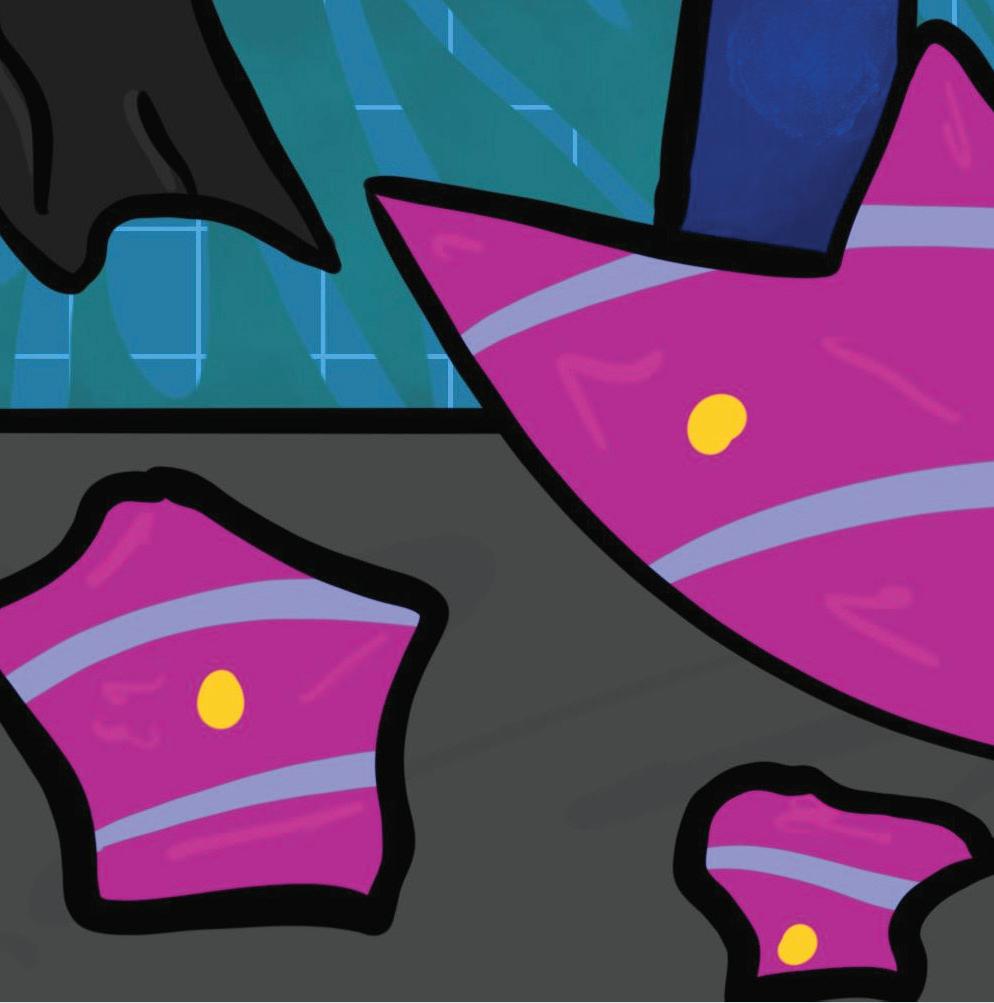






Despite the gloomy weather this week, the recently improving weather signifying the start of Spring has been a bit surreal for me.
ADVERTISING MANAGER Kurtis Rideout ads@wlusp.com EXECUTIVE
Aaron Waitson ed@wlusp.com HR MANAGER Emily Waitson hr@wlusp.com
Seeing a whole new season begin is a metaphor for things ending and beginning (props to Abby’s publisher’s note).
For me personally, my position as Editor-in-Chief of the Cord is ofcially ending and the next season in my life is now starting, much like the weather.
Seeing the sky change to what it was like when I rst started this role last year makes me nostalgic.
I can’t help but look back on the last eight print issues of the paper that I have put my blood, sweat
and tears (literally) into with rose tinted glasses.
Since this is my last newspaper, I want to re ect on how interesting this experience in media has been like for me.
Looking back on the start of my university career, I did not picture myself working in media, so I am happy to have had this unexpected position directly in writing, publishing and managing an entire newspaper with my team.
I have always been interested in how media is important in society; important for reporting on events and for representing accurate news for those reading, which was primarily the reason I was eager to be Editor-in-Chief.
I am aware of how important media is to bring news and entertainment to readers, and it has been a pleasure doing so for students for the past year.
My favourite part of this job has de nitely been the creative aspect of working on the covers and the layouts with Abigail (despite all of
the roadblocks we endured).
One of the best parts of this job has also been overseeing so many writers and volunteers, which I am eternally grateful for and will cherish past this position.
rough e Cord and WLUSP, I am happy to have read hundreds of stories this year from multiple sections that highlighted people’s di ering ideas, writing styles, talents and opinions.
I will continue my path in research and writing to better our community and I will take the experiences and lessons learned at WLUSP with me.
I want to nish o my nal editor’s note by saying that everyone is capable of writing and bringing their talents into media and I hope that people will continue to gift their writing to others.
Although I will not be returning as Editor-in-Chief next month, I am thankful to have spent the last year bringing this newspaper to your stands and I hope that they have been enjoyable to go through.

JACKSON WELLS STATION MANAGER, RL
is isn’t to say that Canadian lmmakers didn’t exist up until a couple of years ago. Canada is well-known for its exports to Hollywood from basically every actor you love to acclaimed directors such as Denis Villeneuve.
e problem always seems to be keeping them around. Aside from the aforementioned Cronenberg who seems allergic to anywhere outside of Toronto, Canada can’t seem to keep their talent home.
It’s di cult to build a successful career as a Canadian lmmaker when there’s no established industry and Hollywood is a plane ride away.
e production and distribution infrastructure is another issue entirely. Waterloo is fairly close to Toronto, one-half of Canada’s lm-

making hubs and I consider myself more tapped into movies than the
average person and it is almost impossible to hear about anything new coming out of the scene. If you want to see it in theaters? Basically
impossible unless you want to go to the TIFF Lightbox in downtown Toronto.
anks to Canadian lm distributors like levelFilm and Mongrel Media, seeing Canadian movies on the big screen is getting easier but with a fraction of the marketing budgets of the latest American blockbuster, it’s still an uphill battle.
While I love Leonardo Dicaprio meme pointing at Oliver’s Jewelry ads in I Like Movies, I don’t want to see more Canadian movies out of some sort of nationalistic pride. I just want to see good movies and I know there are fantastic lmmakers all over the country who could make one if they were just given the opportunity.
So next time you’re planning to see a movie, check out the one playing for one week only on the last screen at the Cineplex or nally crack open that Canadian Hits tab on Net ix, you might recognize the street it was lmed on.
NATASHA SHANTZ OPINION INTERN
ursday, Apr. 6 is International
Asexuality Day, which means it’s the perfect moment to talk about an identity that very frequently gets overlooked in discussion around the LGBTQIA+ community.
Yes, the “A” in LGBTQIA+ does stand for “asexuality”, an entire grouping of people whose identities lie outside the scope of what many understand about human sexuality and desire.
As such, those who identify as asexual often think that they don’t t in when it comes to dating and hookup culture, feeling as if there is something wrong with them for not acting like others their age. Of course, there is nothing wrong with them, but societal expectations of sex have led many to wrongly believe otherwise.
So, what is asexuality? Asexuality is typically de ned as not experiencing sexual attraction or feeling it very infrequently. But like any other sexuality, the term is also uid and complex, and is often misunderstood.
First, asexuality is not a choice. It doesn’t refer to a person’s decision to remain celibate or to stay single, it refers to their orientation, their incapability of feeling desire the same way that allosexual people do.
Here’s another new term for you! Being allosexual means that you are sexually attracted to other people, or in other words, you regularly experience sexual attraction. Because allosexuality is what a large majority of people experience, the idea of being asexual, the notion that one may not necessarily experience desire the same way or as much as others, is often
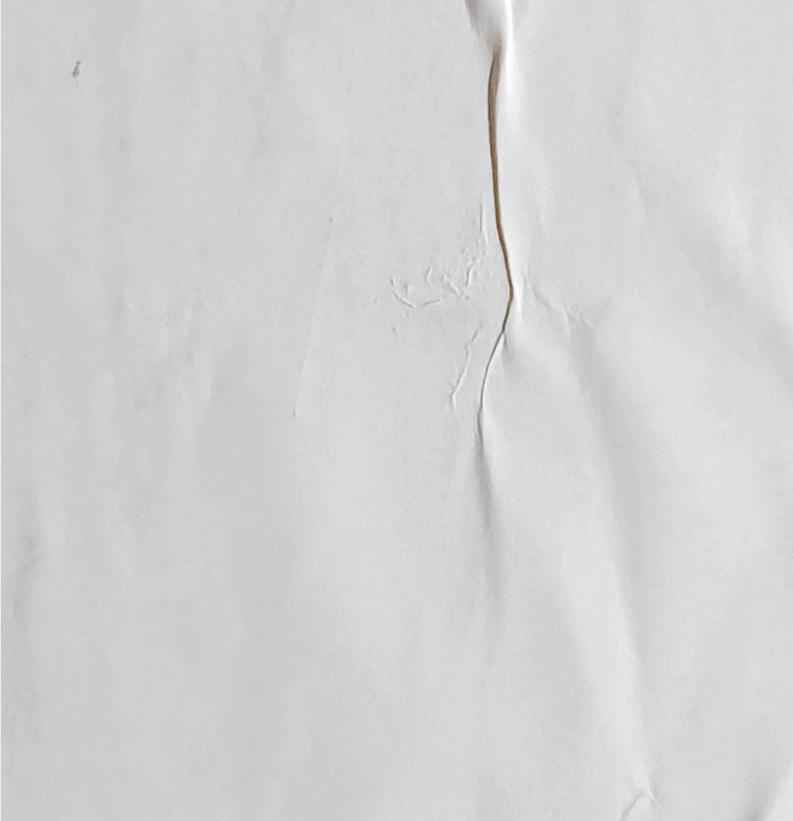
ridiculed or disregarded.
So not only does the world have very heterocentric norms (meaning they are based around heterosexuality), but these expectations are also incredibly allosexual
It’s important to also understand that asexuality is a spectrum and an umbrella term that encapsulates many orientations, including demisexuality and grey sexuality among others.
Demisexuality refers to the need to form an emotional bond with someone before developing sexual attraction to them, and gray-sexuality is di cult to de ne, but it generally can be described as feeling attraction rarely, at a very low intensity or in very speci c circumstances.
But even though people under the umbrella of asexuality may desire sex only rarely or not at all, it is very possible that they are






still open to forming emotionally intimate relationships.
And this is where the complexities of modern dating come in.
e premise of hookup culture, a societal norm based on an acceptance of casual sexual encounters, assumes that everyone wants to have casual sex.
But obviously, not everybody can feel sexual attraction to begin with. While a sex-positive culture is a step forward in one direction, it also leaves a lot of people in the dust.
It is common for people especially in their 20s to have sex with their partner even before establishing a relationship, almost as an expected prerequisite to “putting a label on it”.
But that about the individuals who only desire an emotional connection? How would it feel to be rejected because you don’t see the
appeal in a connection based only or mostly around sex? And how do you then nd a relationship that respects your needs?
Even if a person is both asexual and aromantic (meaning they don’t feel romantic attraction), it is natural to nonetheless crave human connection, a partnership or a source of emotional support.
We so often entangle the concepts of sex, romance and love that it becomes impossible to understand one without the other.
But evidently, the world is not black and white. One person can love another and want to continue a connection without having “normal” sexual or romantic feelings attached. And indeed, it’s time we acknowledge that this “normal” does not t everybody.
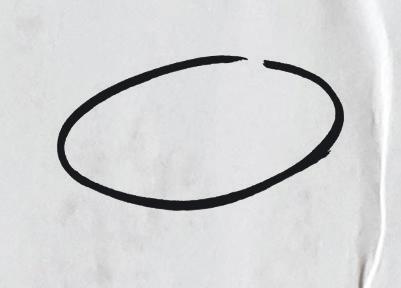

















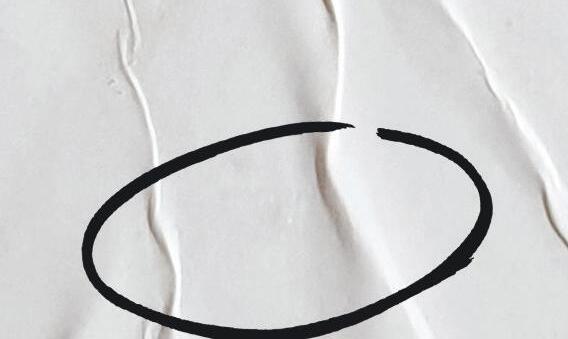










NATASHA SHANTZ OPINION INTERN
“What are you watching right now?”: e quintessential small talk question for when we have nothing else to ask. e shows that occupy our minds are a universal conversation topic, a bad habit and a comfort all at the same time.
ere’s one typical culprit that is responsible for the relentless presence of online entertainment in our lives, and surprise, surprise, this culprit is Net ix.
We currently have countless subscription options for video streaming services, including Amazon Prime Video, Disney+, Hulu, HBO Maxand Apple TV+. But Net ix is one of the oldest in existence, with its streaming services having been launched in 2007 (Amazon Prime Video is only four months older) and its reputation goes to show that it has had the most cultural impact.
ink of the slang term, “Net ix and chill”, the prevalence of Net ix original shows released in seasons at a time, or the calling of “just one more episode” – those who are behind Net ix know that they’ve worked their way into popular culture. But it hasn’t always been like this - imagine it’s 2009. You’re in Grade 2 and you’ve just come back

home on a sunny spring day after school, looking forward to sitting in front of the TV and catching an episode of your favourite show on Nickelodeon.
You excitedly watch the 30-minute episode, and as it nishes, you know you already have next week’s session to look forward to. is is a childhood memory that I often look back on with fondness and nostalgia, at a time in my life where the limitations of technology worked to my bene t in the long run. Sure, I technically could’ve

BRONTE BEHLING
MANAGING EDITOR
Some days, you see something posted online that makes your blood boil. A “take” so bad, that it makes you want to quit the internet forever and never look back (honestly, we’d all probably be better o for it).
e other day, I saw one of these posts. On Twitter, of course.
As a student in lm studies, I’ve seen some interesting opinions
kept watching other shows on the channel (although my mom denitely wouldn’t have let me), but if a series released only one episode per week, I had no choice but to wait seven more days.
With the introduction of Net ix and the concept of streaming, we now have all the content we want accessible at our very ngertips. If we so desire, we could binge-watch Outer Banks, Perfect Match or Shadow and Bone for days on end. is is all just ne and dandy for
convenience’s sake: Patience is no longer a necessary quality when technology o ers us everything with the touch of a button! But it goes without saying that this does damage in the long run.
As I said earlier, binge-watching can very easily turn into a bad habit, especially when it becomes our go-to option for winding down after a long day. While there is value in enjoying time o with your favourite show, there is a ne line between enjoying watching and
watching because we can’t stop, a line that we often cross without realizing it.
And this tendency has become more acceptable in popular culture. I rarely feel the urge to bingewatch, but I always joke about how I keep watching reality dating shows despite knowing that they absolutely melt my brain cells.
Binging is such a common habit for so many people in university, so I’ve allowed myself to increasingly indulge in it.
From the (imagined) peer pressure to the vast amount of content available on Net ix (as well as on all the aforementioned streaming services), it’s just so easy to watch episode after episode and ignore the to-do list sitting at the back of my mind.
As the semester nears its end and the stress of nals season approaches, I know that some of my healthy practices, like limiting my screen and binge-watching time, will de nitely be harder to maintain.
But knowing that I always feel better when I disconnect from technology, I’m going to put my own wellness rst, and remind myself that I deserve my own attention much more than Net ix does.
surrounding those in my discipline. For the most part, there’s some truth to them - I completely t the stereotype of the lm student who has a vendetta against Marvel lms for “ruining” the industry and making it di cult for independent lms to thrive. However, some “takes” still go too far.
So, seething in front of my laptop, I wondered what gave this individual (supposedly a lm grad themselves) the nerve to shame a fellow lm student for not liking or wishing to do an extensive deepdive into Citizen Kane. Clearly, there was no possible way this student could be t to study lm if they didn’t worship Citizen Kane. Ridiculous.
Taking a breath and calming myself down after seeing this tweet, my thoughts immediately strayed to the frequent gatekeeping present in academia. If you, as a student of a particular major cannot fully worship the text that makes your area of study well-researched and notable, are you really not set out to be studying the major you’re in?
Short answer, no. You shouldn’t quit. In fact, we need more students like the one mentioned in the tweet who had no taste for Citizen Kane
In the bubble of academia, it is very tempting to go along with the opinion of your peers and professors. e widespread public

opinion of texts (especially in the arts) can be overwhelming. Of course you have to think Casablanca is revolutionary. Of course you MUST worship the ground the great Steven Spielberg walks on. It is widespread “general” opinions like these that hold academia back. In reality, we should be questioning our bias when it comes to declaring an artistic text “revolutionary.” While I recognize the craft of Citizen Kane is notable, is the lm really all that great apart from the in uence it had on lm production?
I can already imagine the cringing those reading this who are in lm studies are doing right now. But, stay with me.
I’m not shaming anyone for labeling Citizen Kane a “cinematic masterpiece.” What I am doing is calling for more discretion when using that label. Do you really enjoy the lm? Or are the opinions of others marring your judgment? Next time you engage with a text that is lorded for whatever contribution it brought to your study, keep in mind the way in which public opinion has lorded it as a “master” example of your eld. We’ll all be better o for it.
And, if you are a lm student who can’t stand Citizen Kane, you aren’t alone. Nor should you be shamed for it. If you’re able to back up your dislike for the lm, all the more power to you.


JUSTIN COUTO SPORTS CONTRIBUTOR
“Heart over height.” A saying that has become permanently entrenched within the sporting world and yet, each year thousands of athletes are told they are ‘too small’ or ‘not big enough’ to compete at the highest level.
e game of hockey has evolved into one controlled by those with athleticism, speed, and the o ensive repower to match it. Wilfrid Laurier Golden Hawks men’s hockey defenseman Colin Campbell possesses each of these attributes to the highest degree that earned him a spot on the OUA All-Rookie Team for the 2022-23 season. His 5 goals ranked second and his 13 points ranked third among rookie defensemen in the OUA.
Campbell’s dedication to his craft continues every day. “I’ll watch my own games to improve on a lot of stu … You’re going to have to study the work you put it on the ice to perform well in the game.”
After being cut from minor hockey due to his size in the introductory year of contact, Campbell was forced to play house league. Upon arrival, the coach told him they had too many forwards and o ered him the chance to play defense instead. Playing house league was “Probably my most fun season of hockey…it’s no stress, no contact.” He said.
Campbell spent the year learning an entirely new position and more importantly, building his con dence back up.
“You go to the rink and you’re the guy and it brought my condence back in hockey because I was pretty down when I got cut. I didn’t know if I was ever going to get back to AAA.”
His worries were washed away the following season when he earned a spot back in AAA. After going undrafted in his Ontario Hockey League (OHL) draft year, Campbell decided to make the full-time switch to playing defense, and at the conclusion of the 2018-19 season, he was ready to quit hockey entirely. He enrolled at Guelph-Humber University fulltime and began to look at life





beyond hockey.
Right before school began, his dad received a call from the Guelph Storm of the OHL inviting Campbell to attend their rookie camp.
Campbell remained pessimistic about his chances of making the team but was excited by the opportunity saying, “I was excited just to go to an OHL training camp… growing up, the OHL is kind of the big thing.”
Campbell then impressed the team enough to earn an invitation to the o cial training camp.
“I went to main camp and I don’t know what it was but I was full of energy…I was all pumped up. I was competing against the rst-round picks, and it was pretty exciting.”
He left the camp thinking that was it and headed to school for orientation day when he received a call from the Storm asking him to sign with the team and the next day, Campbell was suiting up to play a preseason game versus his hometown Mississauga Steelheads.
“I was just like, what is happening right now…I was just in university and now I’m playing in an OHL game, so it was pretty surreal.”
Although he made the team, Campbell struggled to crack the Guelph Storm lineup due to his slight frame. He was around 5’7



150lbs at the time and so even when he did dress, he was not playing much.
On October 25, 2019, Campbell recorded his rst and only point in the OHL versus the North Bay Battalions. Even after playing 23 OHL games, Campbell said, “I still wasn’t very con dent in myself as a player because I didn’t play much there. Even though I was playing a high level, I didn’t really know what I could do.
Now out of the OHL, and still searching for the type of hockey player he was meant to become, Campbell found himself playing in the British Columbia Hockey League (BCHL).
It was there that Campbell grew into his own as a player. “I was the top defensemen on my team and that’s when I started to think, okay I can do this.” His con dence began to rise and so did his quality of play.
Campbell is an o ensively gifted puck moving defenseman who can be relied upon to quarterback a team’s powerplay. His biggest asset and source of con dence is his rst-class skating ability.
He said, “ ere is a little bit of a gift…I am lucky that I have a smooth stride. Some guys never get that no matter how much training they put in.” After a successful

season in the BCHL, racking up 20 points in 33 games, Campbell turned his attention back to schooling and reached out to several schools, one of which was Laurier.
Campbell received a formal o er from former Manager of Men’s Hockey Operations & Head Coach Greg Puhalski to become a Golden Hawk. Puhalski gave Campbell a tour of the campus and facilities as well as a rundown of what to expect his role to be with the team.
“As a rookie I wasn’t expecting to get anything special, or if I was even going to play.”
at summer, Puhalski was replaced by Kevin Forrest as Interim Head of Hockey Operations & Head Coach, leaving Campbell once again wondering if he still had a role on this team. “I had no communication with Kevin, the new coach. We didn’t talk much at all at the beginning of the season.”
After an 0-3 start to the season in which Campbell was scratched for each game, Coach Forrest called him to step in and provide an o ensive spark.
“I knew if there was any way I was going to crack this lineup I had to contribute o ensively because they’re not going to bring any 5’7 guy to kill penalties when you already have all these tall dudes.”
Laurier’s backend was very defensively oriented, and so adding in a player of Campbell’s stature lled a team need. His insertion into the starting lineup paid dividends almost immediately.
On November 5th, the Golden Hawks were trailing the Western Mustangs 3-2 late in the third period. Campbell notched his rst career OUA goal to tie the game on the power play, then in overtime he scored the game winning goal giving the Hawks their second win of the season. With this performance, Campbell cemented himself a permanent spot on the Laurier blueline.
Understanding Campbell is more o ensive minded, Forrest smartly placed him alongside fth year defenseman and captain of the Golden Hawks, James omson.
Campbell credits omson for much of his success this season saying, “ omson’s a great player but he’s an unbelievable person. He was such a great captain for our team… When I got down on myself, he always picked me up and so I owe a lot of the success I had to him too.”
After years of ghting to carve out a role on his teams, repeatedly being overlooked because of his size, Campbell has nally found himself in a situation where his strengths are appreciated and utilized appropriately.
With an all-rookie team honour now on his resume, Campbell has already set his sights on his next goal. His attitude has shifted from just wanting to get into the lineup and wanting to improve his game, to now believing he could become a top D-man in the OUA.
Colin said, “I want to step up and I’m excited to see where my game goes…Next year is going to get a little easier for me as far as feeling more con dent on the ice.”
Every season, each team has a few question marks and Laurier is no di erent. However, if one thing is certain it is that Colin Campbell will continue to improve and become a top- defenseman in the OUA.


NATASHA GIANNANTONIO SPORTS EDITOR
“You just dream of it.” Laurier men’s rugby 8-man Dylan Di Girolamo said.
e team had a breakthrough year appearing in the OUA nals for the rst time, on record, in program history, and making it to the Canadian University Men’s Rugby Championship.
“I rst got into rugby when I was a kid … My uncle used to play professionally for Canada. He went to two World Cups … I started playing when I was eight to ten, and then got back into it at the under 12’s.”
Di Girolamo noted the impressive family history in rugby on his road to becoming a Golden Hawk.
Training with the Arrows Academy, Di Girolamo plays with athletes from across the league, hearing remarks about Laurier’s program and theirs alike: “A lot of the teams brush us o at the start of the year. And it really got under our skin … We were tired of losing.”
e co-Captain and OUA rst-team all-star helped lead the Hawks to the OUA nals in a tri-
umphant come-from-behind win over the Queens Gaels, who had won seven championships in a row from 2012 to 2020.
“You kind of dream of beating Queens at home. eir program is something special. ey’ve always had good teams.”
e 34-27 victory marked the rst time in program history on record the Hawks defeated the Gaels in Kingston.
“ at really puts us on the map … Me and Adam [McNee], the captains, we probably received maybe 50 messages from players on Brock, Western, Guelph, on every team across the league, congratulating us.” e upset shocked the OUA as a usually middle of the pack team took down a rugby superstar.
“We talked at the start of the season about just how we’re going to approach the season and that was game by game, week by week to hit our maximum … We just told ourselves whatever happens today we’re going to put our best foot forward for 80 minutes, and when we nish this game, being able to look into each other’s eyes and say “I did the best I could, I put everything I had into this game.”
And that’s what happened.”
Laurier’s run came to an end
in the nals against the Guelph Gryphons where the team settled for second best. However, the team proceeded to make history at the National Championship for the rst time.
“Every year you just watch other teams go and you watch the games and you want to be there. But for us this year, I think it was really good. We didn’t get the results we wanted … But I see now it was a good learning experience for a lot of our younger guys.”
e Hawks fell just short in the national quarter nals against the McGill Redbirds, going on to meet the number one seed Victoria Vikes in the consolation semi nals, and secured eighth place after a loss to the Calgary Dinos.
Di Girolamo is not only a star player on the eld, but a star in the community. For the past few years, the team contributes to the Optimism Women’s Shelter, something that is close to the team.
“ ey rely on our donation. Every year we account for over 50 per cent of their donations. ey’re a small shelter in Stratford and they have around 17 or 18 rooms, but they’re always over capacity. And so for us to help support these women is something we pride ourselves on.”

As for leadership on the eld, the Hawks have the advantage that both Captains have perfect chemistry.
After playing against each other in high school and meeting again at Laurier, the two had the same vision for how their four years would go.
“We play four months of the year together and then we’re in the Arrows Academy together, so we get a lot of gameplay together. We
gured each other out very easily. Very natural for us. It came organically how we were able to just successfully lead a team together.”
Di Girolamo returns to the team next season as a fth year and hopes to lead his squad to another OUA nal and national championship appearance. “We have the experience under our belts. We know what it takes to get there. Hopefully now when we get there, success comes our way.”

NATASHA GIANNANTONIO SPORTS EDITOR
e much-needed construction on Alumni Field is now complete. e massive project upgraded the former eld to give both varsity and intramural sports a revamped space for competition.
“We hit a point pre-COVID where the turf was no longer viable and safe for use.” Kate McCrae Bristol, Athletics and Recreation Director said.
e new eld comes with an improved footprint to better suit the needs of certain sports. As for features, the update provides plenty.
“We’ve got bleachers that we didn’t have before, a new big press box going in, and where that will really help us is not just from a varsity programming perspective, but also for hosting other opportunities on behalf of the region … e fencing is new, which we think will enhance safety … ere’s going to be a nice new scoreboard too.”

the department in scheduling and expanding both programs as students were previously wait-listed for intramural sports.


McCrae Bristol emphasized how the new space will give students more opportunities to get involved in various activities, noting that only using University Stadium for recreation and intramurals limited


“ ere will be an increase in recreation and wellness opportu-


nities. ere’s more space now for open recreation which we know matters to students … I also think it matters particularly for our rst year students who are living right around [the eld].” She said. “All


our recreational programming will now be able to double in size.”
e focus was on current students who, due to the pandemic, “Deserve a really great space to have fulsome experiences … I think trying to reimagine some of our spaces that continue to meet the recreation and wellness needs of our students, but also bring all of our students to a place that they feel is just for them.”
Alumni Field is also a bookable and reservable space for recreation. Going into the spring and summer semesters, McCrae Bristol also noted the opportunity for students to get involved in both intramurals and employment. “It will also get great use through our summer camps that we employ hundreds of students as camp counsellors and supervisory sta ere will be summer intramurals and recreational opportunities and open eld space.”
e eld has accessible features as well. “ ere’s a ramp on the Science Building entrance … And once the press box goes in, there will also be accessible entry into the box.”
Alumni Field is open in full force with the grand opening scheduled for Apr. 20. CAMPUS

